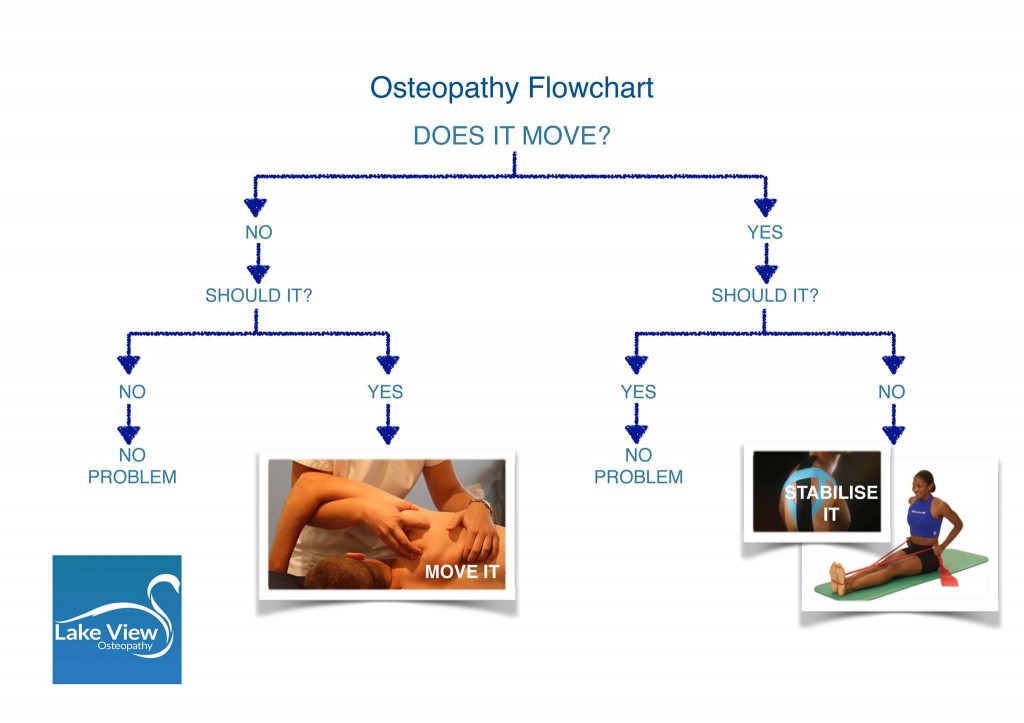A frequent dilemma all osteopath’s are faced with on a daily basis:
Do you treat the symptoms or tackle the cause?
For example: A patient walks in with lower back pain. On examination you find a number of problems, hyper mobility of the lower segments exacerbated by chronically restricted, kyphotic thoracic spine. (For any non osteopaths reading this it translates to: the lower back is too wobbly, the upper back is too stiff – so the wobbly bit in the lower back gets over used and over stressed causing pain.) You know they have seen a number of therapists over the years, who help to “put them back” again after injury.
The question is, do you become one of those on the list who just treat the symptoms by reducing the spasm around the wobbly lower back and let them walk out of the clinic happy until the next time, knowing that other problems exist and that it is only a matter of time until these begin to cause them more problems.
Or do you begin to correct the cause, releasing the restrictions above and below to prevent over use of the lower back. However, you do this knowing that they will initially need more treatments than they would with option 1, but that it will help them to stay pain free for longer. Additionally there is the risk of causing more, temporary discomfort while you make these changes with them, as their bodies have been working inefficiently for a long time prior. You also a risk that they won’t keep up with the exercises you give them to build their muscles up correctly. There now becomes a risk whereby the patient questions why they haven’t had the “magic fix” that previous therapists have given them and they give up after a couple of sessions.
To summarise;
Option 1: Quick Fix, walk out if the clinic significantly better, but walk straight back in again in a few weeks/months time when the same problem has returned again. You are aware, as the practitioner of the long term effects of poor posture and body biomechanics, (especially amongst athletes), and that the problems you leave “un touched” could cause a number of problems later down the line.
Option 2: Correct the cause, likely to feel sore following the first treatment and will need more treatments initially, the problem should be resolved. (providing exercises/lifestyle change and treatment plan is followed).
Personally and Osteopathically, I want to get the world functioning better, getting injured less, but I am more than aware that some patients would just rather take Option 1.
Most patients like the idea of Option 2, but fail with exercises and lifestyle changes, so we get caught mid way between Option 1 and 2 where the patient requires the odd “MOT” session to keep their body functioning well despite the challenges they present it with. We’ll call this Option 3, the MOT.
I always discuss these options with each patient to see what route they’d rather take we then formulate a plan so they know what to expect from our sessions.
So I want to know, what do you prefer? Option 1, 2 or 3?
Please do let me know, I always wonder if I make these choices clear enough for my patients and I try not to put my views onto their own expectations.
I welcome view points from both Osteopaths and patients so please do email me, this will help me to formulate good treatment plans in the future.
tilly@lakeviewosteopathy.co.uk





